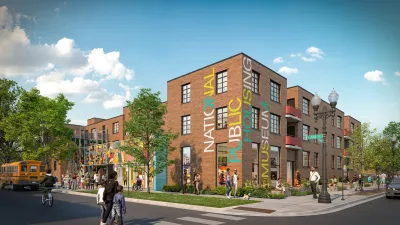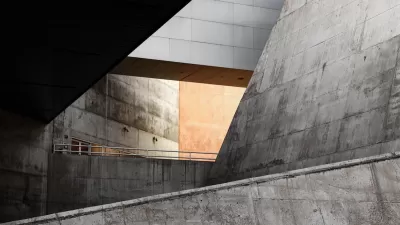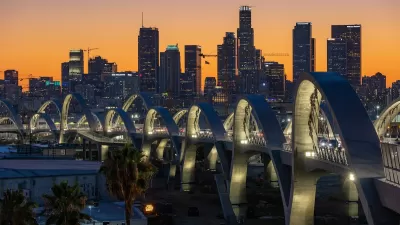Dehumanizing urban renewal-era public housing developments across North America are being replaced by mixed-use, mixed income neighborhoods with affordable housing. Yet in Regent Park, Toronto at least, many troubling social problems remain.
Margaret Wente, writing in the Globe and Mail, discusses how planners' expectations that razing and rebuilding Regent Park would improve the quality of life and reduce the area's crime rate. However, with four homicides in two months, Regent Park may need more than just a redesign, she argues.
"A lot of people were hoping that Regent Park had finally left its violent past behind. An ambitious billion-dollar "revitalization" plan has been widely hailed as a model of enlightened planning. The cockroach-infested, urine-stained, graffiti-covered buildings are being replaced with modern, mixed-income housing that will not only improve living standards for the residents, but also ease the area's social dysfunctions.
Regent Park's new housing units are swell. The new supermarket is great. The new swimming pool will be fun. But the hardest ghettos to eradicate are the ghettos of the mind."
Wente points out that more is needed than just physical planning, and highlights a mentoring program called Pathways to Education that is intended to encourage kids to stay in school.
(Op-ed includes links to additional stories on Regent Park's revitalization).
FULL STORY: Can bricks and mortar really change behaviour?

Americans May Be Stuck — But Why?
Americans are moving a lot less than they once did, and that is a problem. While Yoni Applebaum, in his highly-publicized article Stuck, gets the reasons badly wrong, it's still important to ask: why are we moving so much less than before?

Using Old Oil and Gas Wells for Green Energy Storage
Penn State researchers have found that repurposing abandoned oil and gas wells for geothermal-assisted compressed-air energy storage can boost efficiency, reduce environmental risks, and support clean energy and job transitions.

Placekeeping: Setting a New Precedent for City Planners
How a preservation-based approach to redevelopment and urban design can prevent displacement and honor legacy communities.

San Francisco’s Muni Ridership Grew in 2024
The system saw its highest ridership since before the Covid-19 pandemic, but faces a severe budget shortage in the coming year.

Colorado Lawmakers Move to Protect BRT Funding
In the face of potential federal funding cuts, CDOT leaders reasserted their commitment to planned bus rapid transit projects.

Safe Streets Funding in Jeopardy
The Trump administration is specifically targeting bike infrastructure and other road safety projects in its funding cuts.
Urban Design for Planners 1: Software Tools
This six-course series explores essential urban design concepts using open source software and equips planners with the tools they need to participate fully in the urban design process.
Planning for Universal Design
Learn the tools for implementing Universal Design in planning regulations.
Heyer Gruel & Associates PA
City of Moreno Valley
Institute for Housing and Urban Development Studies (IHS)
City of Grandview
Harvard GSD Executive Education
Salt Lake City
NYU Wagner Graduate School of Public Service
City of Cambridge, Maryland





























